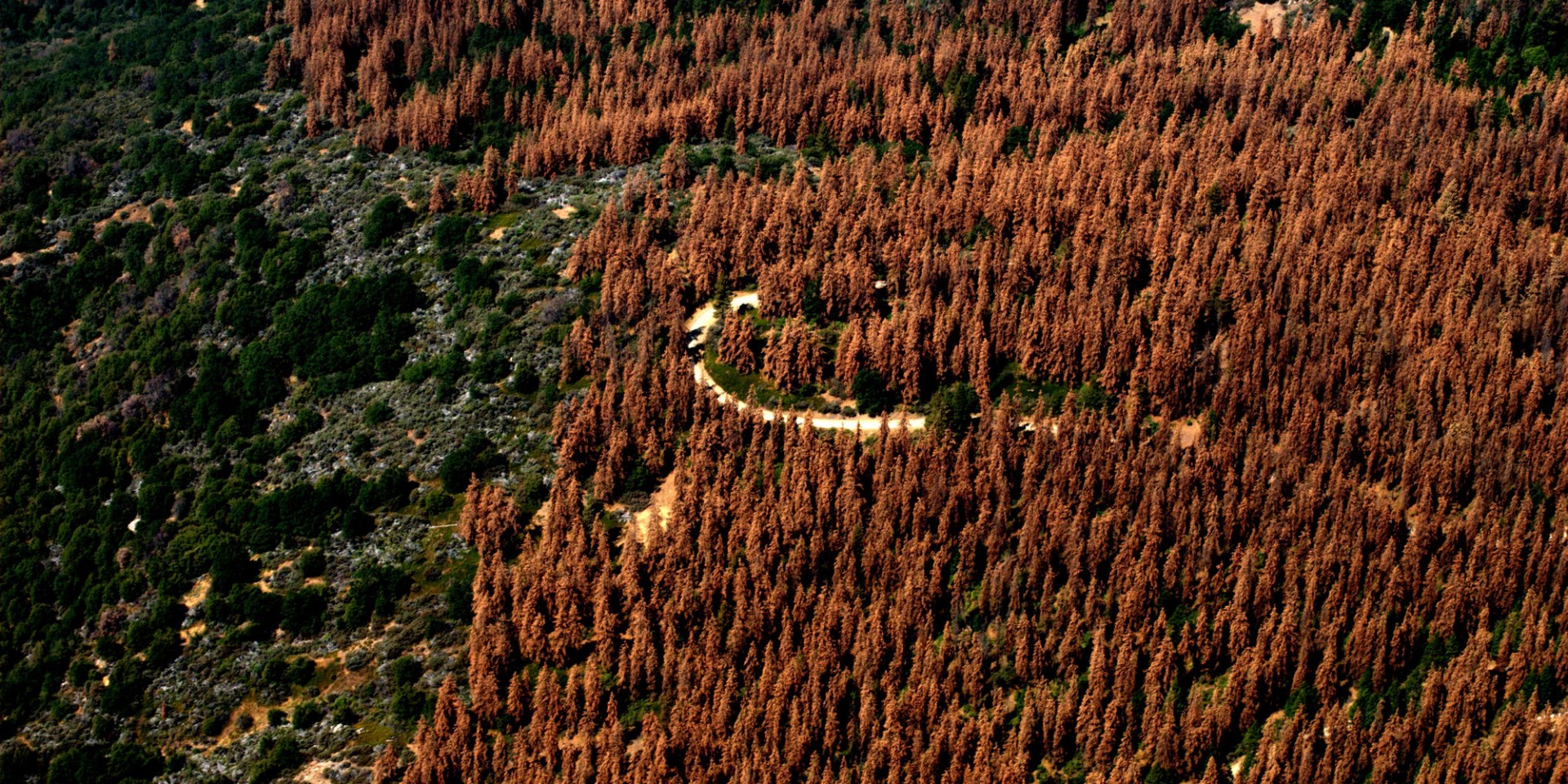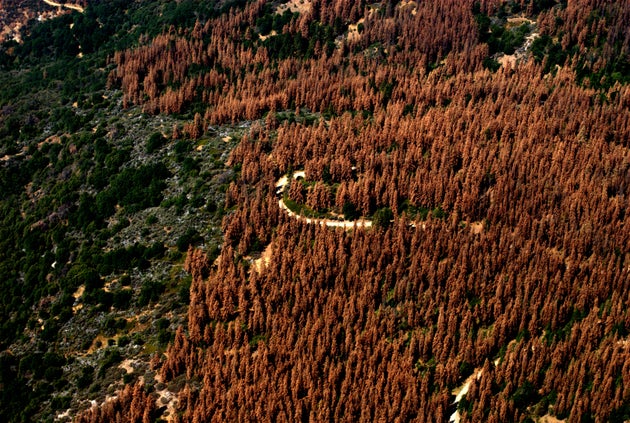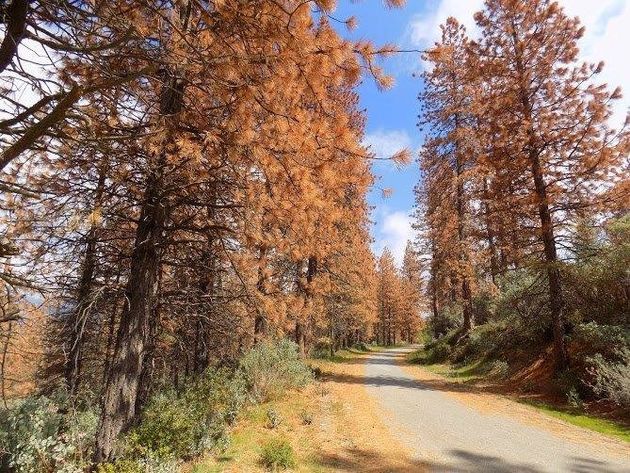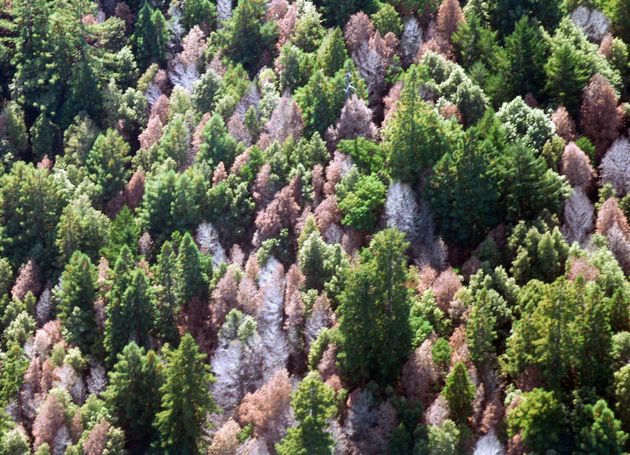An ‘Unprecedented’ 102 Million Trees Have Died In California’s Drought-Stricken Forests

In California’s drought-stricken forests, trees are dying at an “unprecedented” rate, according to officials. The U.S. Forest Service said last month that 102 million trees have died across the state since 2010, including 62 million dead trees in 2016 alone.
And the die-off is showing no signs of slowing.
“Millions of additional trees are weakened and expected to die in the coming months and years,” said the Forest Service.
“The scale of die-off in California is unprecedented in our modern history,” Randy Moore, a forester with the agency, told the Los Angeles Times. Trees are dying “at a rate much quicker than we thought.”
Five consecutive years of severe drought have been pinpointed as a primary cause of the tree deaths. The unusually hot and dry weather has put California’s trees under enormous strain, making them more vulnerable to injury, disease and organisms like the bark beetle an insect that attacks and kills trees.
But experts say the drought is not the only culprit.
Other human activities, including fire suppression policies and land development, have also fueled the problem.
“When you’re talking about tree mortality, it’s a whole bunch of things linked together,” David Rizzo, chair of the plant pathology department at the University of California Davis, told Vox. “The drought is important, but you also have to look at land-use and management decisions that go back a long time.”


It will, therefore, take a comprehensive and multi-faceted approach to help the dying trees and also prevent wildfires, which could become more frequent and intense as drought lingers and dead trees increase.
Vox explains:
Dead trees lower the moisture content of the forest, and when their leaves and needles fall to the ground, that adds to the surface fuel that usually drives wildfires in places like the Sierra Nevada. Not only can wildfires spread faster, but there’s a greater chance that entire trees will go up in flames (known as ‘torching’) — making fires more severe.
California certainly does not need further exacerbation of its forest fire problem.
2016 was a “record setting” wildfire season for the state, said the Forest Service. The Blue Cut fire alone scorched over 30,000 acres in Southern California in August and forced the evacuation of 80,000 people.

As the climate changes, extreme weather events, including drought and wildfires, are becoming more frequent and intense across the nation. Climate change has at least doubled the area affected by forest fires in the Western U.S. since 1984, according to an October study.
The Forest Service said the fires have put significant strain on federal resources. Last year, fire management consumed 56 percent of the agency’s budget. That number is anticipated to rise to 67 percent by 2025.
“Longer, hotter fire seasons where extreme fire behavior has become the new norm, as well as increased development in forested areas, is dramatically driving up the cost of fighting fires and squeezing funding for the very efforts that would protect watersheds and restore forests to make them more resilient to fire,” the Forest Service said.

As the deaths of trees in California’s forests continue, wildfires in the state are certainly one of the more immediate concerns. But the impact of the dying vegetation could be far-reaching even beyond America’s shores.
In a study published last month, researchers from the University of Washington found that large-scale forest die-offs due to drought, heat, beetle infestations or deforestation can significantly impact global climate patterns and even “alter vegetation on the other side of the world.”
“People have thought about how forest loss matters for an ecosystem, and maybe for local temperatures, but they haven’t thought about how that interacts with the global climate,” said study co-author Abigail Swann in a news release. “We are only starting to think about these larger-scale implications.”